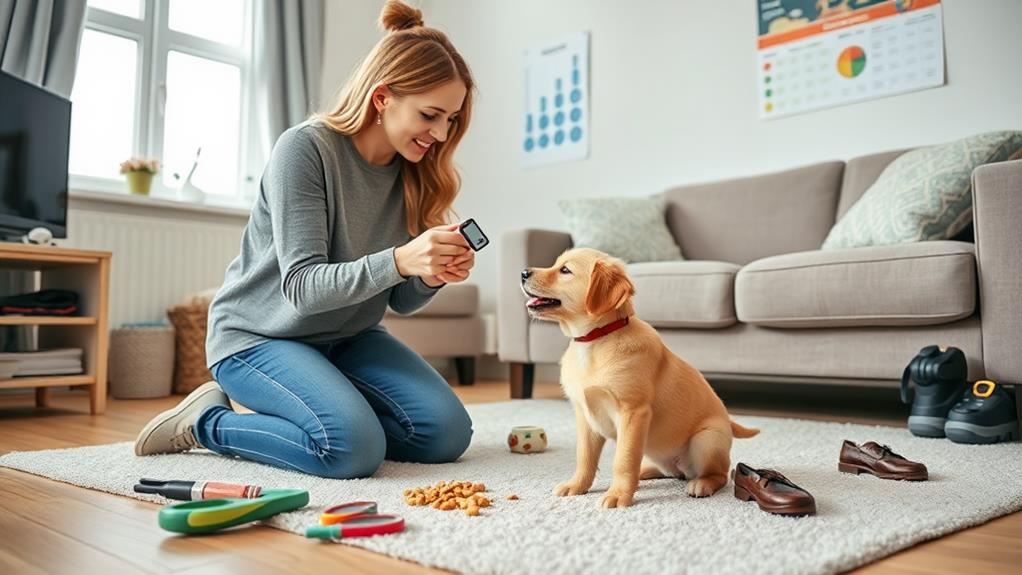To master essential dog training tips at home, start with basic commands like "sit," "stay," and "come." Consistent house training is key, so set a regular schedule for bathroom breaks. Use positive reinforcement by rewarding your dog immediately for good behavior with treats or praise. Establish a routine that incorporates short training sessions throughout the day. Finally, socialize your dog early by exposing them to different environments, people, and other pets. These steps will build a solid foundation for your dog's behavior. There's more to discover that can elevate your training experience even further.
Start With Basic Commands
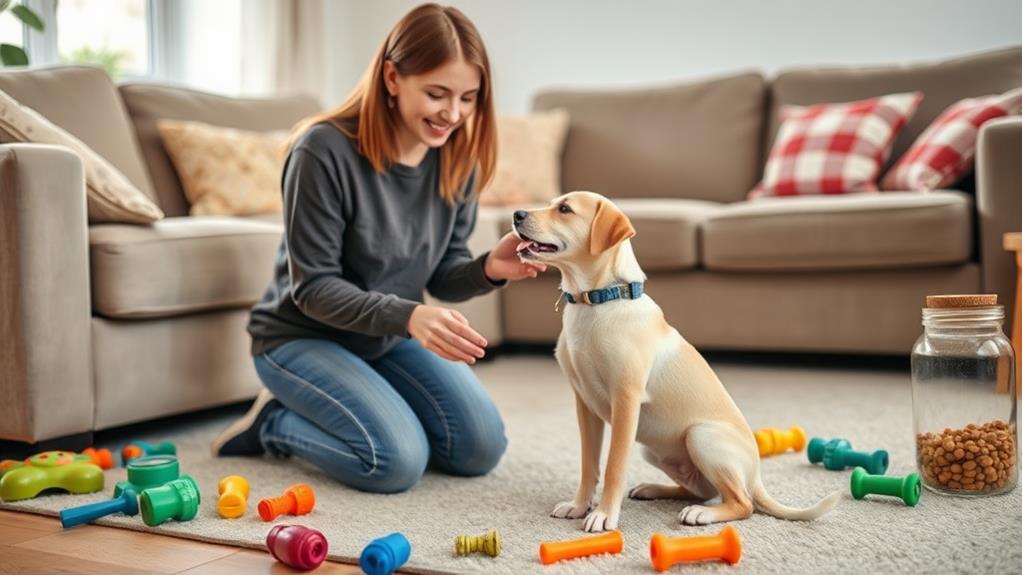
To kick off your dog training journey, start with basic commands that form the foundation for good behavior. Teaching your dog commands like "sit," "stay," "come," "down," and "leave it" will help create a strong bond between you and your furry friend. These commands not only enhance communication but also guarantee safety in various situations.
Begin with "sit." Hold a treat above your dog's nose and slowly move it back over their head. As their head goes up, their bottom will naturally lower. Once they sit, reward them immediately.
Next, practice "stay." Ask your dog to sit, then take a step back. If they stay, reward them; if not, gently guide them back.
For "come," use a leash to encourage your dog to approach you. Call them excitedly, and when they reach you, praise them lavishly. "Down" involves getting your dog to lie flat, which you can achieve by guiding their nose down with a treat.
Consistent House Training
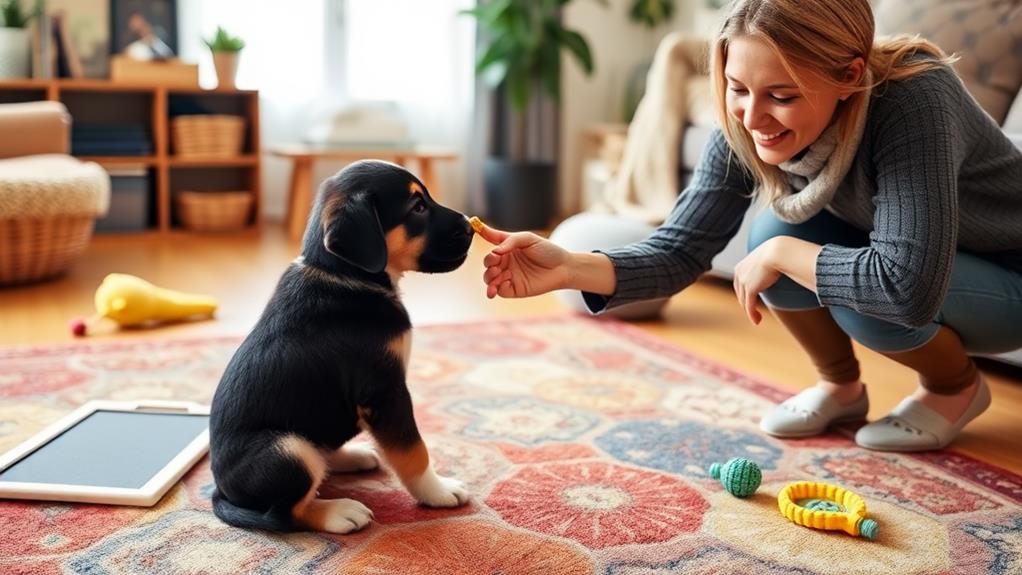
Establishing a consistent house training routine is essential for your dog's success and your peace of mind. To begin, set a regular schedule for bathroom breaks. Take your dog outside first thing in the morning, after meals, and before bedtime. This helps them understand when it's time to go.
Choose a designated bathroom area outside, and take your dog to this spot each time. The familiar scent will encourage them to relieve themselves there. Keep an eye on your dog indoors, and watch for signs that they need to go, like sniffing or circling. If you catch them in the act, quickly take them outside to the designated area.
Consistency is key. Use the same door every time you take your dog out, and make sure everyone in your household follows the same routine. Accidents will happen, so remain patient and avoid scolding your dog. Instead, focus on reinforcing the positive behavior when they do go outside.
Use Positive Reinforcement
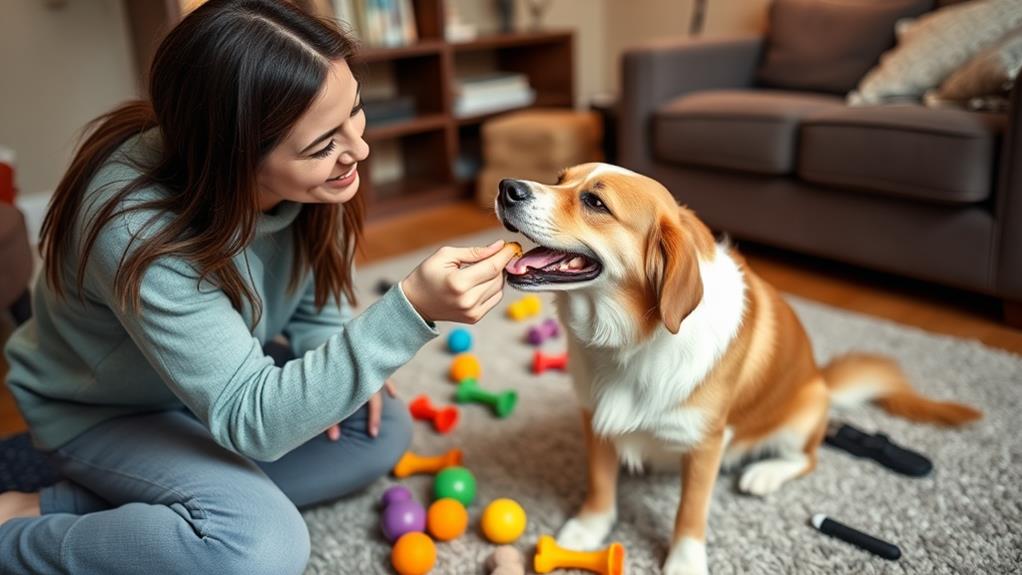
While training your dog, using positive reinforcement can make a significant difference in their learning and behavior. This method encourages your dog to repeat desired behaviors by rewarding them with treats, praise, or playtime. Instead of focusing on punishment for mistakes, you'll want to highlight what your dog does right.
Start by identifying what motivates your dog the most—be it treats, toys, or affection. Whenever your dog successfully follows a command or demonstrates good behavior, immediately reward them. This immediate reinforcement helps them connect the action with the reward, making it more likely they'll repeat it in the future.
Consistency is key. Guarantee everyone in your household uses the same commands and rewards. This helps your dog understand what's expected of them. Keep training sessions short and fun; dogs have limited attention spans, so aim for 5 to 10 minutes per session.
Also, remember to be patient. Learning takes time, and some dogs may grasp commands quickly while others take longer. Celebrate small victories, and you'll foster a positive learning environment that strengthens your bond with your furry friend.
Establish a Routine
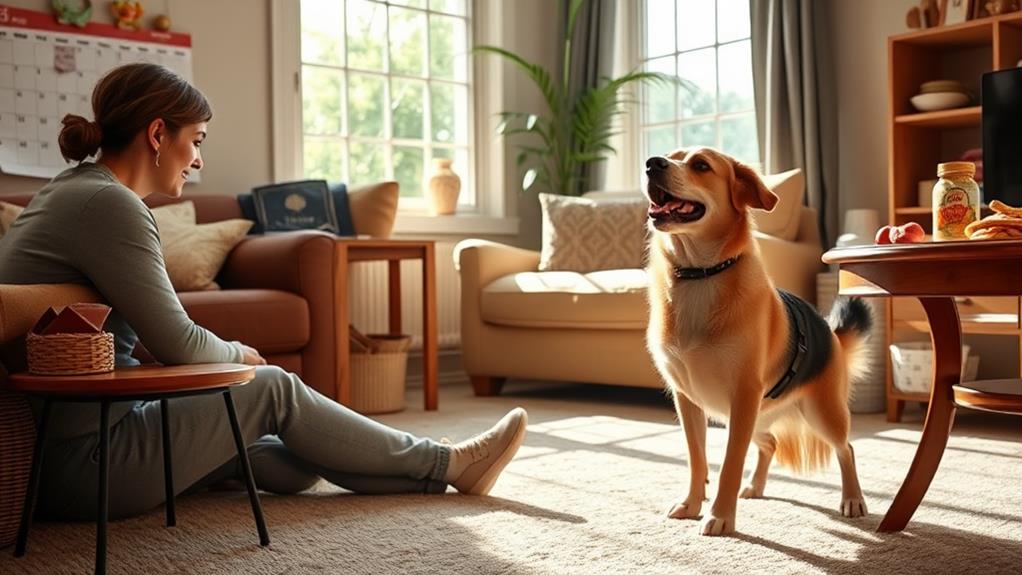
Creating a consistent routine can greatly enhance your dog's training experience. Dogs thrive on predictability, and establishing a daily schedule helps them understand what to expect. Set specific times for feeding, walks, playtime, and training sessions. This structure not only aids your dog's understanding but also builds their confidence.
Start by designating a quiet space for training. Use the same area each time to create a familiar environment. This consistency allows your dog to focus better and reduces distractions. Incorporate short training sessions throughout the day, ideally after meals when your dog is more receptive.
Make sure to balance training with play and relaxation. Incorporating these elements into your routine helps your dog stay engaged and motivated. Remember, patience is key; don't rush the process. If something doesn't seem to be working, adjust your routine rather than getting frustrated.
Lastly, be consistent in your commands and rewards. Using the same words and gestures helps your dog learn faster. By establishing a routine, you're not just teaching commands; you're fostering a stronger bond with your dog, leading to a happier and more well-behaved companion.
Socialization Is Key
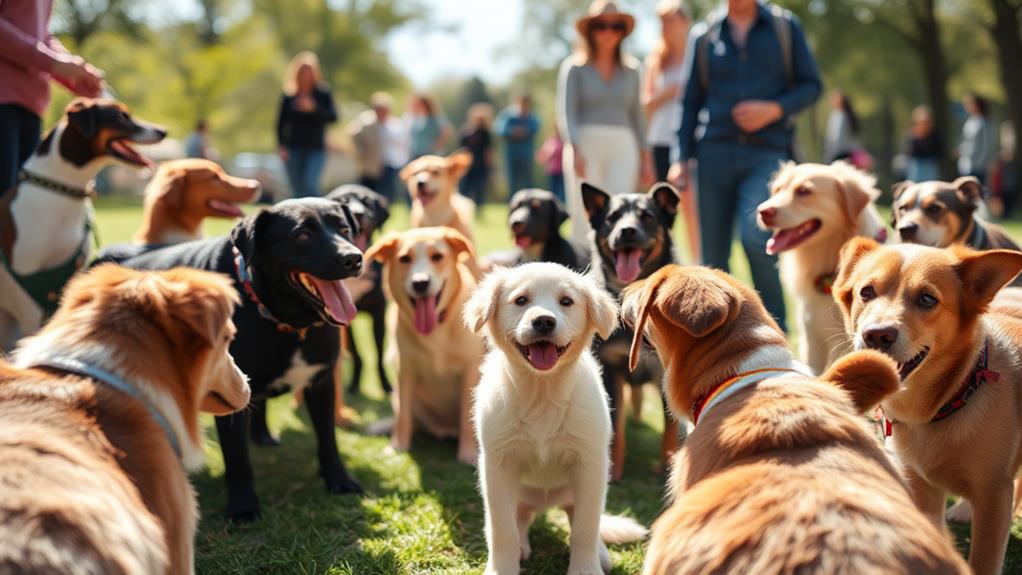
Socialization is an essential part of your dog's development, shaping their behavior and temperament. By exposing your pup to a variety of environments, sounds, people, and other animals, you're helping them become well-adjusted and confident. Start early, ideally when your dog is a puppy, as this is the critical period for socialization.
Take your dog on walks in different neighborhoods, visit parks, or attend puppy classes. Encourage positive interactions with other dogs and people. Monitor their behavior; if they seem anxious, provide reassurance and keep the experience positive.
It's also important to expose your dog to various stimuli, like car rides, different surfaces, and even household items like vacuum cleaners. The more experiences you can safely provide, the better equipped your dog will be to handle new situations in the future.
Frequently Asked Questions
How Long Should Training Sessions Last for Beginners?
Training sessions for beginners should last around 5 to 10 minutes. Keeping sessions short helps maintain your dog's attention and prevents frustration. You can gradually increase the duration as your dog becomes more comfortable and focused.
What Type of Treats Are Best for Training?
When it comes to training your dog, you want to choose treats that really hit the spot. Soft, smelly, and small ones work best, making it easier for your pup to stay motivated and engaged.
Can I Train My Dog Without Using Treats?
Yes, you can train your dog without treats. Use praise, toys, or playtime as rewards instead. Consistency and positive reinforcement are key, so be patient, stay engaged, and enjoy the bonding experience while training.
How Do I Handle Distractions During Training?
To handle distractions during training, you can start in a quiet area, gradually introduce distractions, and reward your dog for focusing on you. Keep sessions short and fun to maintain their attention and enthusiasm.
What Age Is Best for Starting Dog Training?
Most experts suggest starting training between 7 to 8 weeks old, as puppies' brains are like sponges, soaking up new information. You'll build a strong foundation, making future training easier and more enjoyable for both of you.
Conclusion
By mastering these five essential dog training tips, you'll transform your home into a haven of harmony and understanding. Think of your bond with your furry friend as a beautiful tapestry, woven from patience, consistency, and love. Each thread represents the time you invest in training and socialization, creating a joyful and well-behaved companion. Remember, every small step you take today builds a brighter future for you and your dog. Enjoy the journey together!

